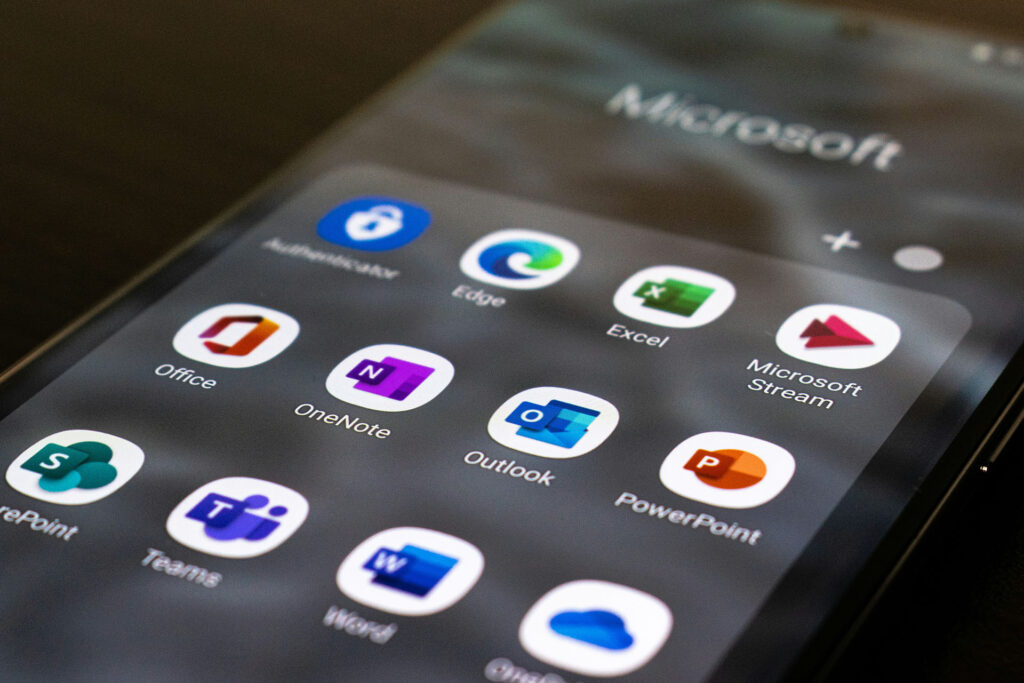What is Traditional PBX & Microsoft Teams?
Traditional phone systems, known as Private Branch Exchange (PBX), have been the backbone of business communications for decades. These on-premises systems handled voice calls within an organisation and connected to the public switched telephone network (PSTN) for external calls. However, with the rapid evolution of technology, traditional PBX systems are becoming increasingly outdated and limiting for modern businesses.
Microsoft Teams, on the other hand, is a cloud-based unified communications platform that offers a comprehensive solution for businesses of all sizes. It combines various communication and collaboration tools, including voice over IP (VoIP) capabilities, video conferencing, messaging, and file sharing, all within a single, user-friendly interface.
Limitations of traditional PBX systems

While traditional PBX systems have served businesses well, they come with several limitations:
- High upfront and ongoing costs: PBX hardware, installation, and maintenance can be expensive, especially for smaller businesses or those with multiple locations.
- Limited scalability: Adding new users or locations often requires purchasing additional hardware and infrastructure, which can be time-consuming and costly.
- Lack of flexibility: On-premises PBX systems are tied to a specific location, making it challenging for remote workers or those who need to work from different locations.
- Limited features: Traditional PBX systems typically offer basic telephony features, lacking advanced collaboration tools and integration capabilities.
How Microsoft Teams modernises business communication
Microsoft Teams addresses the limitations of traditional PBX systems by offering a modern, cloud-based solution that provides:
- Cost-effective and scalable: Teams is a cloud-based service, eliminating the need for expensive on-premises hardware and enabling easy scaling as your business grows.
- Unified communications: Teams combine voice, video, messaging, and file sharing into a single platform, streamlining communication and collaboration.
- Remote work enablement: With Teams, employees can stay connected and productive from anywhere, using their laptops, mobile devices, or IP phones.
- Advanced features: Teams offers a wide range of features, including call routing, voicemail, auto attendants, call queues, and integration with other Microsoft 365 apps and third-party services.
Is Microsoft Teams the right choice for your business?

Migrating to Microsoft Teams is a significant decision that requires evaluating if it aligns with your organisation’s specific needs. As a trusted solution, Teams accommodates businesses of all sizes, but the migration process may vary based on your number of users and existing infrastructure.
Consider if Teams meet your industry’s compliance requirements, especially in regulated sectors like healthcare or finance. User adoption is crucial, so effective training and change management support are essential for a smooth transition.
Evaluate if Microsoft Teams meets your customisation and integration needs with third-party apps. Consider your business size, industry regulations, user adoption, and customisation requirements to decide if Teams is a suitable choice for your communication and collaboration.
Benefits of migrating from PBX to Microsoft Teams
Transitioning from a traditional PBX system to Microsoft Teams can provide numerous advantages for modern businesses. From cost savings and improved security to enhanced productivity and collaboration, Teams offers a comprehensive solution that addresses the limitations of legacy phone systems.
1. Cost savings and ROI analysis
One of the most significant benefits of migrating to Teams is the potential for substantial cost savings. By leveraging a cloud-based solution, businesses can eliminate the need for expensive on-premises PBX hardware, maintenance contracts, and associated IT resources. Additionally, Teams’ calling plans and direct routing options can significantly reduce long-distance and international calling costs.
2. Enhanced security and compliance features
Microsoft Teams prioritises security and compliance, offering robust features that protect sensitive data and ensure adherence to industry regulations. With built-in encryption, multifactor authentication, and advanced access controls, Teams provides a secure communication platform for businesses. Furthermore, its compliance offerings, such as legal hold and data retention policies, help organisations meet regulatory requirements.
3. Simplified IT management and maintenance
Traditional PBX systems often require dedicated IT resources for ongoing maintenance, upgrades, and troubleshooting. With Teams, these responsibilities are offloaded to Microsoft, simplifying IT management for businesses. Regular updates and new feature releases are automatically deployed, ensuring your organisation stays up-to-date without the need for manual interventions.
4. Remote work enablement
Remote and hybrid work arrangements are becoming more common in today’s workplace. Microsoft Teams is designed to support this shift, enabling seamless communication and collaboration for remote and on-site employees. With Teams, users can make and receive calls, participate in video conferences, and access shared files and resources from anywhere, using their laptops, mobile devices, or IP phones.
5. Improved user experience and adoption rates
Teams offers a user-friendly interface that integrates various communication and collaboration tools into a single platform. This unified experience enhances productivity and fosters higher adoption rates among employees. Teams integrates smoothly with other Microsoft 365 apps like Outlook and SharePoint, offering a consistent user experience that encourages adoption.
Features of Microsoft Teams Phone System

- Cloud-based PBX capabilities – at its core, Teams delivers a robust cloud-based PBX solution, allowing users to make and receive calls seamlessly from various devices, including laptops, mobile phones, and IP phones.
- Advanced call management features – Teams offer advanced call management capabilities, such as call forwarding, call transfers, and simultaneous ringing, ensuring that important calls are never missed.
- Voicemail and auto-attendant options – businesses can take advantage of Teams’ voicemail and auto-attendant features, providing a professional and efficient way to handle incoming calls and messages.
- Call queue management – with call queues, organisations can effectively manage incoming call volumes, ensuring that callers are promptly assisted or placed in a queue for the next available agent.
- Direct routing possibilities – Teams supports direct routing, allowing businesses to connect their existing telephone numbers and integrate their on-premises telephony infrastructure with the Microsoft cloud.
- Emergency calling support – Microsoft Teams ensures compliance with emergency calling regulations, providing support for emergency services dialing and location tracking for enhanced safety and peace of mind.
How Microsoft Teams improves collaboration

Microsoft Teams goes beyond traditional communication tools by offering a comprehensive platform for seamless collaboration within your organisation. By integrating various productivity features, Teams empowers teams to work together more effectively, regardless of their physical location.
Unified communications platform advantages
Teams consolidates multiple communication channels into a single, user-friendly interface, providing a unified experience for voice, video, messaging, and file sharing. This streamlined approach eliminates the need to juggle multiple applications, enhancing productivity and reducing context switching.
Real-time collaboration tools
Teams facilitate real-time collaboration through features like shared whiteboards, collaborative note-taking, and screen sharing. These tools allow team members to brainstorm, ideate, and work on projects together in real-time, fostering a more engaging and collaborative environment.
Document sharing and co-authoring
Seamless integration with Microsoft 365 apps like Word, Excel, and PowerPoint enables teams to share and co-author documents directly within Teams. Multiple users can edit and provide feedback on the same document simultaneously, streamlining the review and approval process.
Integration with Microsoft 365 suite
Teams seamlessly integrates with other Microsoft 365 applications, such as Outlook, SharePoint, and OneDrive, providing a cohesive and familiar experience for users. This integration allows for easy scheduling, file sharing, and access to organisational resources, enhancing collaboration and productivity.
Third-party app integration capabilities
Teams offers a robust ecosystem of third-party app integrations, enabling organisations to customise their collaboration experience. From project management tools to customer relationship management (CRM) systems, businesses can integrate the apps they rely on, consolidating their workflows within a single platform.
Unlock the Full Potential of Microsoft Teams with FOIT
Unleash the power of seamless communication and collaboration with FOIT’s Microsoft Teams Calling Management service. Our experts will guide your organisation through a smooth migration from legacy PBX systems to Microsoft Teams, configuring a tailored calling solution that integrates with your existing systems and workflows. Contact FOIT today to revolutionise your business communications.
Frequently Asked Questions
Is Microsoft Teams suitable for businesses of all sizes?
Absolutely. Microsoft Teams is designed to cater to businesses of all sizes, from small startups to large enterprises. Its cloud-based architecture and scalable nature make it an ideal solution for organisations of any scale.
How difficult is the migration process from our current PBX system to Microsoft Teams?
The migration process can vary depending on the complexity of your existing PBX setup, but Microsoft provides guidance and resources to ensure a smooth transition. Proper planning and change management strategies are recommended for a successful migration.
What happens to our PBX hardware and infrastructure after migrating to Microsoft Teams?
After migrating to Microsoft Teams’ cloud-based phone system, your on-premises PBX hardware and infrastructure can be decommissioned or repurposed, potentially leading to cost savings and reduced maintenance overhead.









